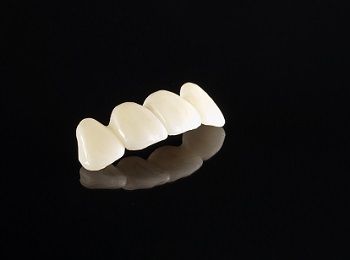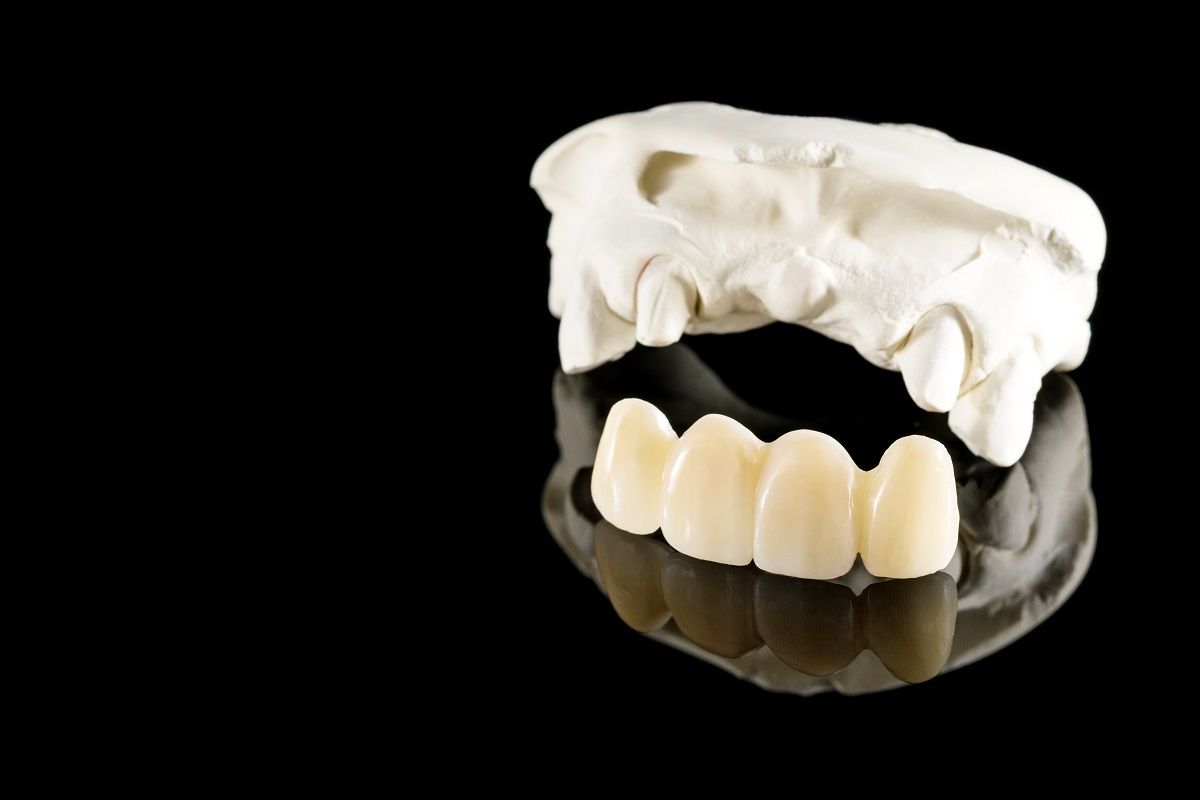A healthy, radiant smile is often considered one of a person’s most appealing features. However, missing teeth can dampen the confidence and self-esteem of even the most outgoing individuals. Fortunately, advancements in dental technology have provided a range of solutions to this issue, with dental bridges being one of the most popular and effective options available.
Prosthetic devices called dental bridges restore the appearance and functionality of a patient’s smile by bridging the gap created by missing teeth. These bridges comprise artificial teeth, called pontics, securely held in place by dental crowns connected to the natural teeth on each side of the gap. This innovative dental treatment offers a long-lasting solution, allowing individuals to confidently regain their ability to speak, chew, and smile.
While dental bridges are a well-established dental restoration technique, it’s essential to understand that not all bridges are created equal. Dentists commonly employ three primary types of dental bridges, i.e., traditional, cantilever, and Maryland. Each type of dental bridge offers unique characteristics and is tailored to different dental situations, ensuring that patients receive the most suitable treatment for their specific needs.
Choosing the correct type of dental bridge depends on various factors, such as the patient’s oral health, the location of the gap, and their specific aesthetic preferences. Dentists work closely with their patients to determine the most suitable Option, ensuring that the dental bridge provides optimal functionality, durability, and a natural-looking smile. Find out more about three types of dental bridges commonly used in dentistry to make the best choice for yourself.
What are Traditional Bridges, and What Are They Made of?
Traditional bridges fill the gaps caused by missing teeth using artificial teeth called pontics. These pontics are supported by dental crowns on both sides of the opening, acting as anchors to provide stability and support for the bridge.
“Traditional dental bridges have shown success rates ranging from 90% to 95% over 10 years, indicating their effectiveness in restoring function and aesthetics”.
Getting a traditional bridge involves preparing the abutment teeth by removing a small amount of enamel to accommodate the dental crowns. Impressions of the teeth are taken and sent to a dental laboratory, where skilled technicians create a custom bridge that matches the natural appearance of your teeth. Once ready, the bridge is cemented onto the abutment teeth, filling the gap.
Manufacturers make traditional bridges by combining materials, including porcelain or ceramic fused to metal (PFM) or all-metal. Metal alloys such as gold, silver, or other non-precious metals often comprise the bridge’s framework, providing structural support.
Typically, dental professionals make artificial teeth for bridges using porcelain or ceramic materials. The choice of materials depends on various factors such as aesthetics, durability, and the patient’s specific requirements. The goal is to create a bridge that closely resembles natural teeth regarding appearance and functionality.
Cantilever Bridges: What Are These and When Are They Useful?
Cantilever bridges are specific dental bridges used to replace missing teeth when only support is available on one side of the gap. Unlike traditional bridges that require assistance from both sides of the opening, cantilever bridges utilize support from a single healthy tooth adjacent to the space.
The design of a cantilever bridge involves attaching a dental crown to a neighboring healthy tooth, supporting the artificial tooth. By connecting a dental crown to an adjacent healthy tooth, the configuration of a cantilever bridge provides anchorage on one side only. It allows the pontic to extend into the space previously occupied by the missing tooth.
“Cantilever bridges can have a similar lifespan to traditional bridges, ranging from 10 to 15 years with proper care”.
Cantilever bridges are beneficial in cases where there is no viable abutment tooth on one side of the gap due to tooth extraction or a congenitally missing tooth. Cantilever bridges offer a solution for tooth replacement in specific situations by utilizing support from a single adjacent tooth.

Maryland Bridges: Conservative and aesthetically Pleasing Option
Maryland bridges offer a conservative and aesthetically pleasing option for tooth replacement. These dental bridges support the artificial tooth or teeth by bonding a metal or porcelain framework to the backside of the adjacent teeth, eliminating the need for dental crowns.
The framework contains a pontic that fills the gap, providing a natural-looking restoration. Maryland bridges require minimal preparation of the adjacent teeth, preserving the natural tooth structure. It makes them an excellent choice for individuals who prefer a less invasive option.
“Patient satisfaction with Maryland bridges is generally positive, particularly due to their conservative approach and minimal impact on adjacent teeth.”
Traditional, Cantilever, and Maryland Bridges: Similarities and Differences
While these dental bridges serve the same purpose of replacing missing teeth, they have distinct characteristics that set them apart. Here, we will discuss their similarities and differences for your broader understanding.
- Purpose: The primary objective of all three dental bridges is to effectively replace missing teeth, ensuring the restoration of the smile’s function and aesthetics.
- Fixed Restoration: Traditional, cantilever, and Maryland bridges are all fixed dental restorations, meaning they are permanently attached to adjacent teeth or implants.
- Customization: The fabrication of each bridge type is customized to precisely match the natural color, shape, and size of the patient’s existing teeth.
- Oral Health Requirements: To be considered suitable candidates for all three bridge types, individuals must have good oral health, including healthy gums and adequate bone structure capable of supporting the bridge.
- Support and Design: Traditional bridges rely on dental crowns placed on the abutment teeth on both sides of the gap for support. Cantilever bridges utilize a single dental crown on one side of the space to assist when no aid is available on the opposite side. Maryland bridges provide support by bonding a metal or porcelain framework to the adjacent teeth’ backside, eliminating the dental crown requirement.
- Preparation of Adjacent Teeth: Preparation for the traditional bridge involves removing enamel from the abutment teeth to accommodate the dental crowns. Similar to conventional bridges, the preparation for the cantilever bridge involves removing enamel from the adjacent tooth that will provide support. Maryland dental bridges require minimal preparation, which usually involves light etching of the enamel to create a rough surface for bonding the framework.
- Invasiveness: Traditional bridges involve moderate invasiveness due to the preparation of the abutment teeth. Cantilever bridges are moderately invasive, requiring the preparation of the adjacent tooth for support. Maryland bridges are the least intrusive Option, requiring minimal enamel removal and preserving the natural tooth structure.
- Ideal Cases: Traditional bridges are an excellent choice for people with one or multiple missing teeth who still have healthy teeth on both sides of the gap. Cantilever bridges are suitable when support is available on only one side of the space, with a healthy adjacent tooth. Maryland bridges offer a conservative approach as they require minimal alteration of adjacent teeth. If preserving the natural tooth structure and aesthetics is a priority, Maryland bridges can be a favorable choice.
Final Thoughts
Although each type of bridge offers unique advantages, seeking guidance from a dental professional is crucial to identifying the most suitable Option. The success and longevity of dental bridges depend on proper oral hygiene, regular dental check-ups, and maintenance. Adhering to these practices will help ensure the longevity and functionality of your bridge.
Contact your Pinole dentist, Azadeh Hosseini, DDS, or Ghazal Hosseini, DDS, at Top Pinole Dental to learn about Dental Bridges: Exploring Traditional, Cantilever, and Maryland Options.
Resource:
Pros And Cons Of Dental Bridges
*This media/content or any other on this website does not prescribe, recommend, or prevent any treatment or procedure. Therefore, we highly recommend that you get the advice of a qualified dentist or other medical practitioners regarding your specific dental condition*
1500 Tara Hills Dr., Suite 104A, Pinole, CA 94564
Monday – Saturday 8:00 AM to 5:00 PM
